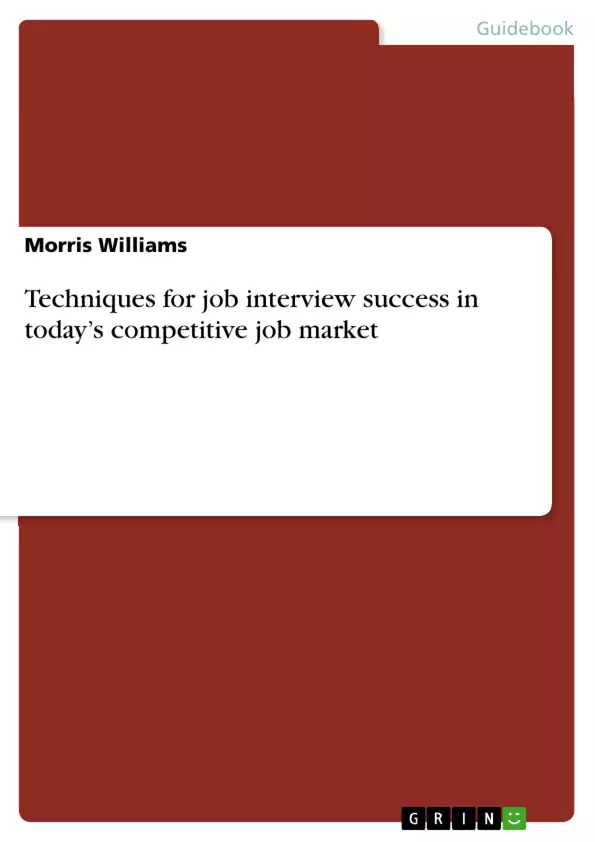The process of getting a job has changed because of the economy. More job seekers are older in today’s climate and many younger job seekers lack the experience needed to successfully complete job interviews with call backs or direct hires.
The unfortunate predicaments of essential health care and the weakening dollar place the average job seeker at a disadvantage. The playing field is always uneven in the job market, and just having a great deal of education or experience may not be enough.
The job interview is where the face-to-face with the gatekeeper happens. It is critical for job candidates to be remembered. Interviewees must take the fact that they are probably not the only ones applying for the job into consideration, though they hope to be the only ones the inter-viewers remember.
We all emit positive or negative energy, whether through a handshake or the color of a necktie because the nonverbal communication of the color could introduce a subcon-scious response based on color association the interviewer has experience.
The color could trigger a positive or negative response and it does not matter whether we are male or female; we all emit the same frequencies. This manual is not a guarantee that you will get the job but it will give you an edge.
Inhaltsverzeichnis (Table of Contents)
- Techniques for Job Interview Success
- Make sure that you eat a good breakfast
- You are actually selling yourself
- Eye-to-eye contact is part of persuasion
- The handshake in the United States is symbolic
- The color of your outfit is extremely important
- The expert fallacy
- Your goal is to be remembered
- Study your resume as if your life depends on it
- Reconnaissance helps you visualize your interview
- SEVEN Interview mistakes to avoid
- BONUS: Phone Interview
Zielsetzung und Themenschwerpunkte (Objectives and Key Themes)
This manual aims to provide job seekers with practical techniques and strategies to enhance their interview performance and increase their chances of securing employment. The manual emphasizes the importance of nonverbal communication, self-presentation, and preparation in the interview process.
- The role of nonverbal communication in interviews
- The importance of self-presentation and branding
- Effective interview preparation strategies
- Common interview mistakes to avoid
- The impact of first impressions in the interview setting
Zusammenfassung der Kapitel (Chapter Summaries)
- Techniques for Job Interview Success: This chapter introduces the manual's purpose and provides an overview of the key concepts and techniques covered throughout the text. It emphasizes the importance of developing a winning edge in a competitive job market.
- Make sure that you eat a good breakfast: This chapter highlights the importance of proper nutrition and preparation before an interview. It explores how stress and anxiety can affect performance and emphasizes the need for rehearsal and practice to overcome these challenges.
- You are actually selling yourself: This chapter emphasizes the importance of understanding the interview as a sales process where job seekers need to effectively sell their skills and experiences. It discusses the primacy effect and how first impressions can significantly influence the interview outcome.
- Eye-to-eye contact is part of persuasion: This chapter focuses on the role of eye contact in establishing rapport and conveying confidence during an interview. It explores the persuasive power of eye contact and its significance in establishing trust and credibility.
Schlüsselwörter (Keywords)
This manual focuses on the key aspects of successful job interviews, including nonverbal communication, self-presentation, interview preparation, and the importance of making a lasting impression. The manual explores topics such as body language, the primacy effect, eye contact, and the significance of first impressions in the interview process. It also provides practical techniques and strategies for job seekers to effectively navigate the challenges of the job market.
- Citar trabajo
- Morris Williams (Autor), 2016, Techniques for job interview success in today’s competitive job market, Múnich, GRIN Verlag, https://www.grin.com/document/322465



